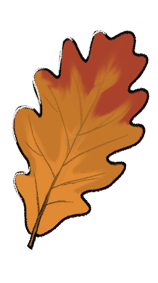The Tao Te Ching (alt. spelling: Dao De Jing) originated in China over 2000 years ago, although the exact date it was written isn't known. It is said to have been written by a man named Lao Tzu (Laozi) - for further information about him, look in the Taoist section of this directory under Lao Tzu.
The Tao Te Ching is comprised of 81 chapters (or verses). It has been translated into different languages more than any other book in the world except the Bible, and the English translations can vary quite a bit depending on the person doing the translation. That's because Classic Chinese (in which the TTC was written) is very difficult to understand, and there is little punctuation or grammar.
Basically, the Tao Te Ching is a philosophical text in which Lao Tzu tried to explain Tao (Dao). It is steeped in mystery and ambiguosity, but the common thread throughout is a reflection on Nature and the ways in which people can attain a more fulfilling life by being like Tao and Nature.
Since there are so many different translations of the Tao Te Ching, it's a good idea to explore a variety of the versions available in English. For those who want a deeper understanding, it can be advantageous to do your own translation from Chinese.
More information
More information
Related categories 1
Sites 21
Translation and commentary by Carl Abbott.
Translational information and comparison, based on D. C. Lau's translation.
Chinese version by Wang Bi with James Legge's English translation. Each paragraph has links to the Wang Bi commentary, dictionary, parallel passage data and other information.
By Sanderson Beck, as included in the Wisdom Bible.
Translations with commentaries by Nina Correa. Site also includes the Seal Script characters used in the Guodian Laozi with English definitions, and a Taoist discussion forum.
Provides three side-by-side translations by J. Legge, D. T. Suzuki and Paul Carus, Dwight Goddard and Henri Borel. Also included is the Chinese text, each character with a drop-down menu with English definitions.
Edition by Dr. Vladimir Antonov.
Translation by A. S. Kline.
A 1998 article in Archeology magazine by Spencer P.M. Harrington on the discovery of the Guodian text of the Dao De Jing.
Providing short explanations on the key concepts and a free video tutorial.
A modern interpretation perpetrated by Ron Hogan - PDF download.
A work in progress including short introductory notes on various English translations.
A translation by J.H. McDonald, with hyperlinked table of contents.
Hilmar Klaus provides translations of the Dao De Jing in German and English. He also includes the Chinese characters for the Guodian, Mawangdui and Wang Bi versions as well as the PinYin spellings.
Translation by David Lindauer.
A 9-fold pattern of 81 insights presented as phrases.
Providing teachings on Tao Te Ching and a guide for beginners (PDF).
Translated by John Louis Albert Trottier.
Each chapter explained by Stefan Stenudd.
Over 30 translations, including some well-known authors and some new ones.
Rick Harbaugh's Chinese text of the Tao Te Ching, hyperlinked to definitions of Chinese characters and to an English translation.
Providing teachings on Tao Te Ching and a guide for beginners (PDF).
Providing short explanations on the key concepts and a free video tutorial.
Provides three side-by-side translations by J. Legge, D. T. Suzuki and Paul Carus, Dwight Goddard and Henri Borel. Also included is the Chinese text, each character with a drop-down menu with English definitions.
Translation by A. S. Kline.
By Sanderson Beck, as included in the Wisdom Bible.
A 9-fold pattern of 81 insights presented as phrases.
A modern interpretation perpetrated by Ron Hogan - PDF download.
Each chapter explained by Stefan Stenudd.
Edition by Dr. Vladimir Antonov.
Translation by David Lindauer.
A work in progress including short introductory notes on various English translations.
Translated by John Louis Albert Trottier.
Translation and commentary by Carl Abbott.
Chinese version by Wang Bi with James Legge's English translation. Each paragraph has links to the Wang Bi commentary, dictionary, parallel passage data and other information.
A translation by J.H. McDonald, with hyperlinked table of contents.
Over 30 translations, including some well-known authors and some new ones.
A 1998 article in Archeology magazine by Spencer P.M. Harrington on the discovery of the Guodian text of the Dao De Jing.
Translations with commentaries by Nina Correa. Site also includes the Seal Script characters used in the Guodian Laozi with English definitions, and a Taoist discussion forum.
Translational information and comparison, based on D. C. Lau's translation.
Rick Harbaugh's Chinese text of the Tao Te Ching, hyperlinked to definitions of Chinese characters and to an English translation.
Hilmar Klaus provides translations of the Dao De Jing in German and English. He also includes the Chinese characters for the Guodian, Mawangdui and Wang Bi versions as well as the PinYin spellings.

Last update:
October 11, 2023 at 5:15:13 UTC

Check out
Regional: North America: Canada: British Columbia: Localities: V: Vancouver: Arts and Entertainment
- Recently edited by shedragon
- Recently edited by shedragon